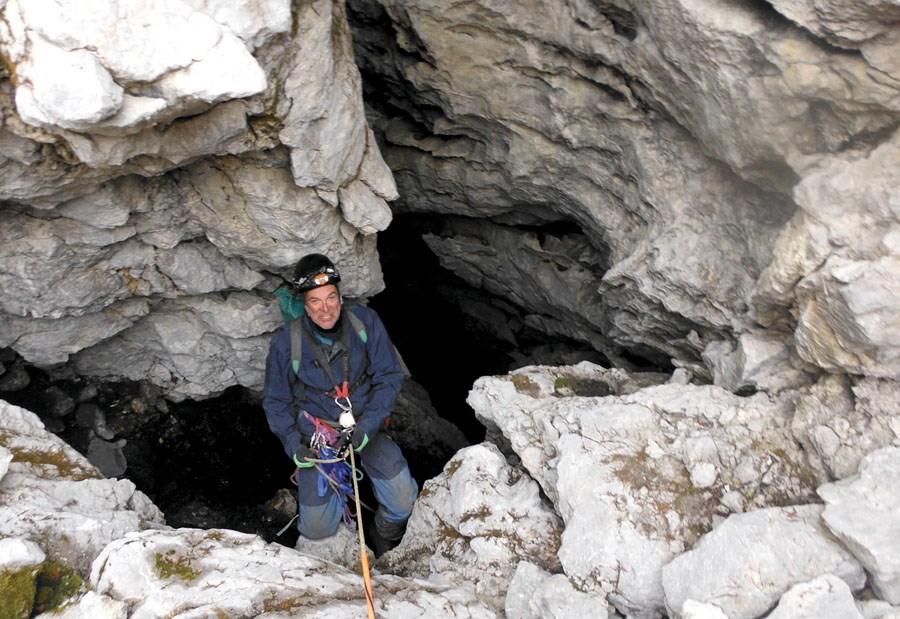Walls of rubble blocked their way into the Taku karst gullet, but a team of local cavers still took many long walks deep into the B.C. underworld.
Led by Prince George veteran cave explorer Bob Rutherford, the team of nine flew into the legendary caving zone in northwestern B.C. to see if they could find a passageway from the many openings on the surface of Mount Sinwa down to the Taku River more than a vertical kilometre below. Water made this journey, they knew, so if humans could follow it would be the longest Canadian cave.
"By Day 10 we still had caves going, we were still surveying, but it became pretty clear that we were unlikely to get into the main system," Rutherford said. "Yes, we could easily have missed 'the one' but everywhere we went it consistently ended in a blockage of rubble. It was consistent enough that it wouldn't personally justify the money and time for another return trip."
Yet Rutherford isn't too upset by the result.
"A lot of people seem to think the mission is just to find 'the big one' but there is no disappointment in this trip. The Taku has been a huge question mark, a legendary question mark, and that has now been ruled out for the caving community. That's an accomplishment on its own. And it was 12 days with great people on a great excursion in one of the most beautiful places in the world - nothing disappointing about that."
Other curiosities were ruled out as well. This enigmatic region is a protected area overseen jointly by BC Parks and the Tlingit First Nation. They asked the group of cavers to keep their eyes open for a few thingsy.
"There are loads of mountain goats up there, but no marmot, no caribou, deer and moose always like it lower down so none of those either, but lots of ptarmigan and lots of Richardson's ground squirrels," Rutherford said. "We saw a lot of evidence that the goats were using some of the caves as shelter, so that was interesting. These caves were mostly inhospitable, technically difficult to reach, but there were a few that had potential if anyone happened to be up that high for some reason. We even considered one of them for our own camp and did use it to dry out some of our gear."
The general definition of karst is limestone terrain perforated with holes eroded by water over millions of years. Over the space of about a city block, said Rutherford, the Taku karst would sometimes have three or four significant holes - caves - into which the mountains rain and runoff would disappear.
One of the caves was coated in something Rutherford had never experienced before - a two-foot layer of permanent transparent ice, giving the team a surreal floor to walk on with a view clear through to the rocks below. The longest single passage was about 400 metres. Most were chimneys that ended in a larger cavern at the bottom but was walled in impassable rubble from that point on despite clear evidence that water continued on through.
Interesting underground terrain is what cavers live for, said Rutherford. The Northern BC Caving Club is more than 20 years old, has an active base in Prince George, and is plugged closely into provincial and national peer groups. Due to the safety concerns and technical realities of the activity, only well prepared people should venture into any cave, and to foster that the club welcomes inquiries via twitter (#nbccc) or their Facebook group.



